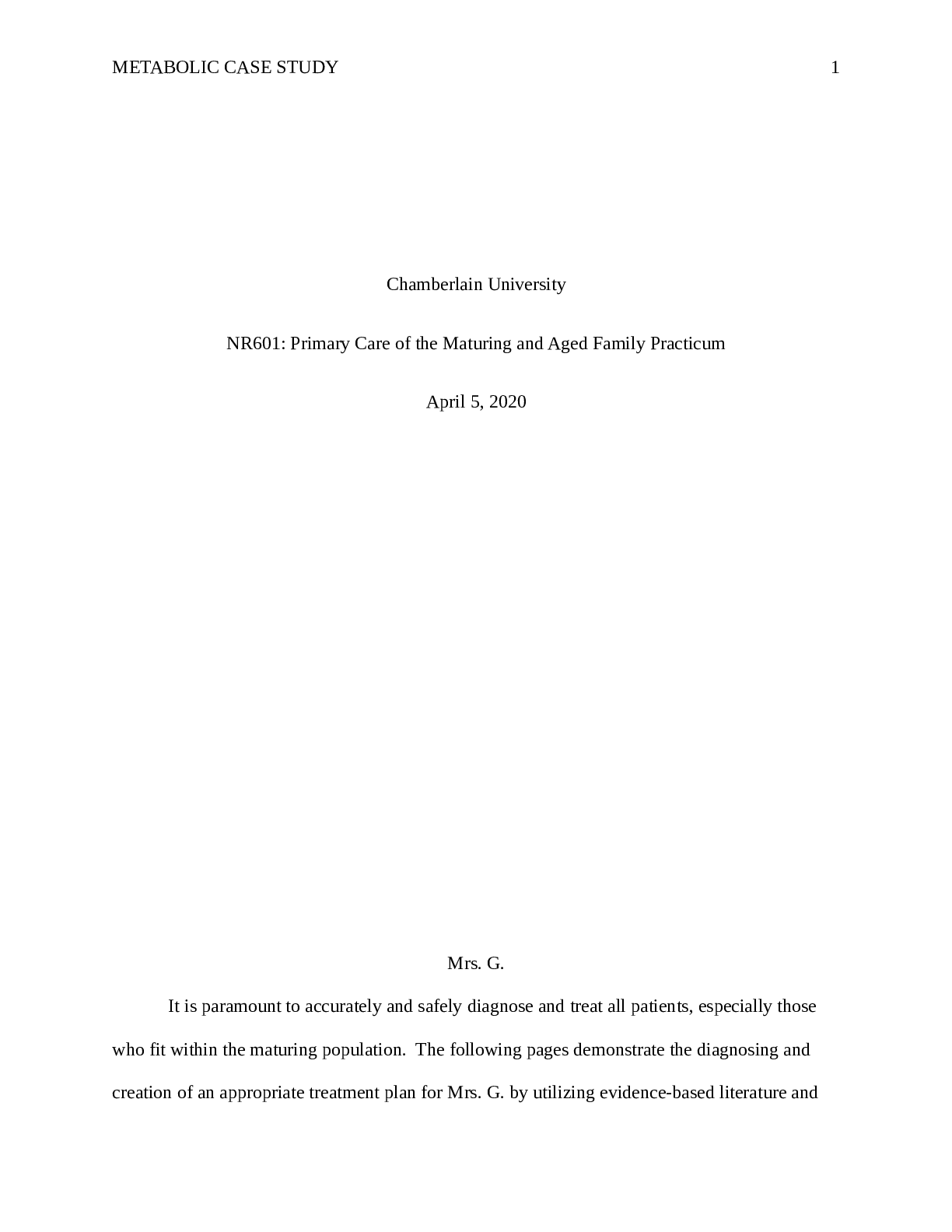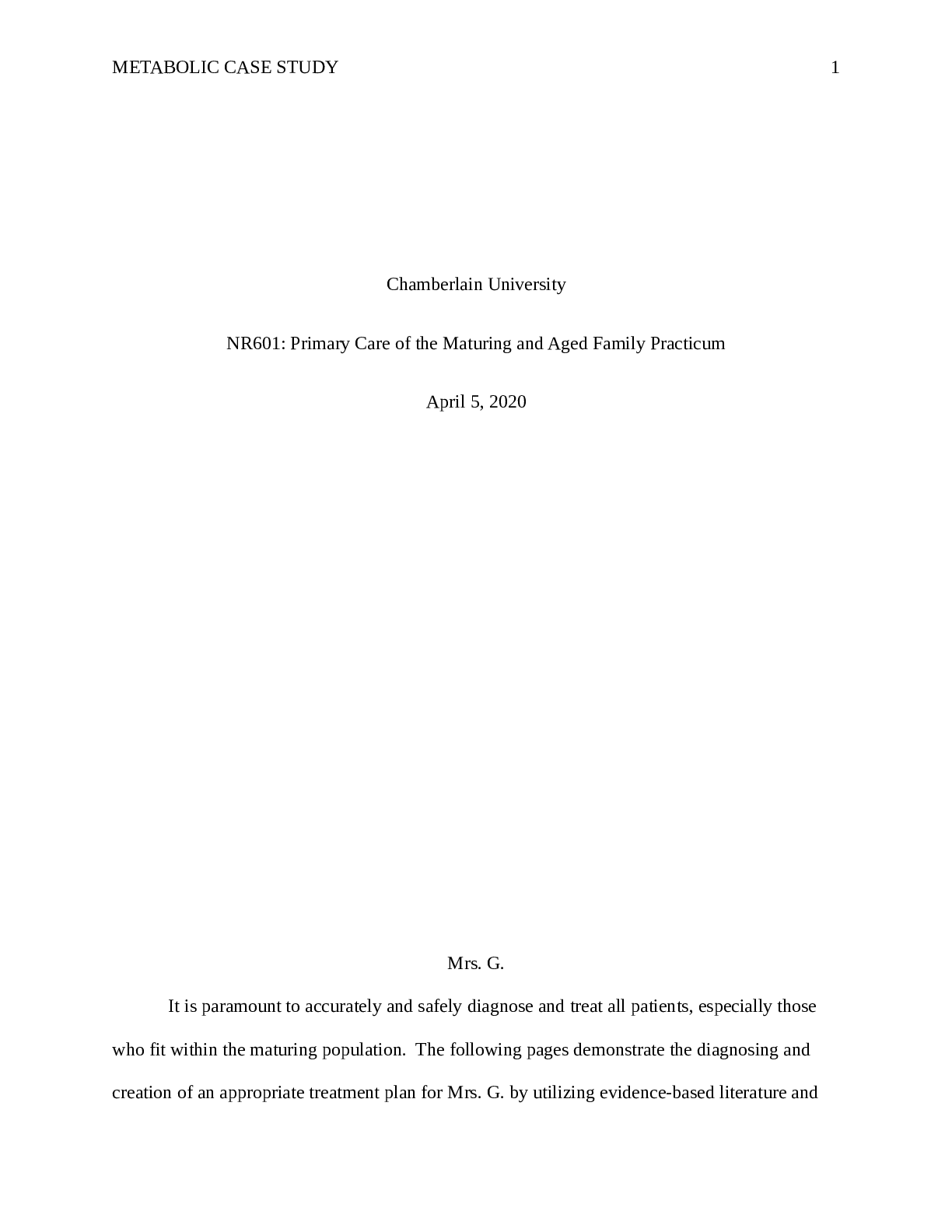METABOLIC CASE STUDY Primary Care of the Maturing and Aged Family Practicum (NR601)
Course
Project Management
Subject
Chemistry
Category
Case Study
Pages
16
Uploaded By
ATIPROS
Preview 4 out of 16 Pages


Download all 16 pages for $ 10.50
Reviews (0)
$10.50
